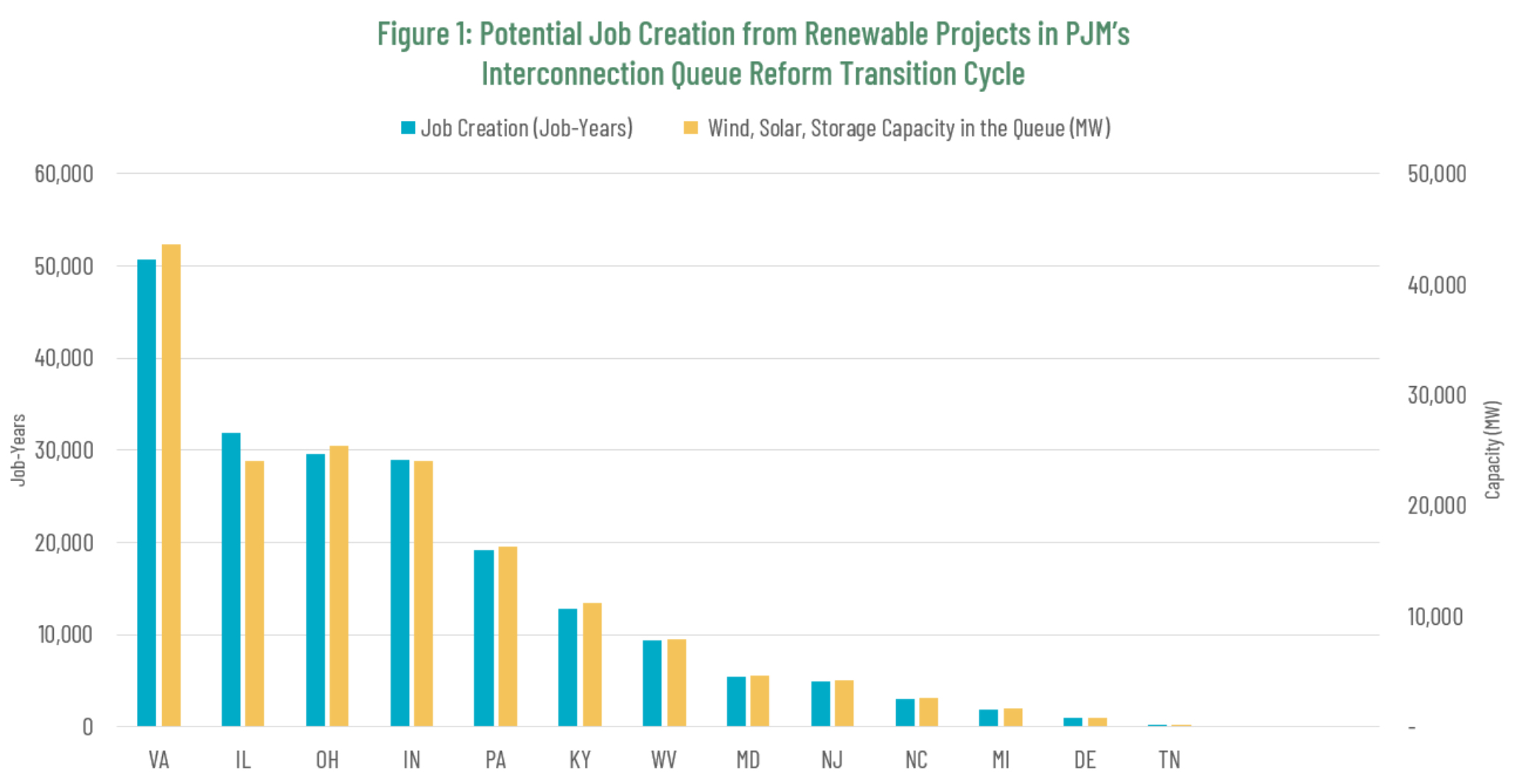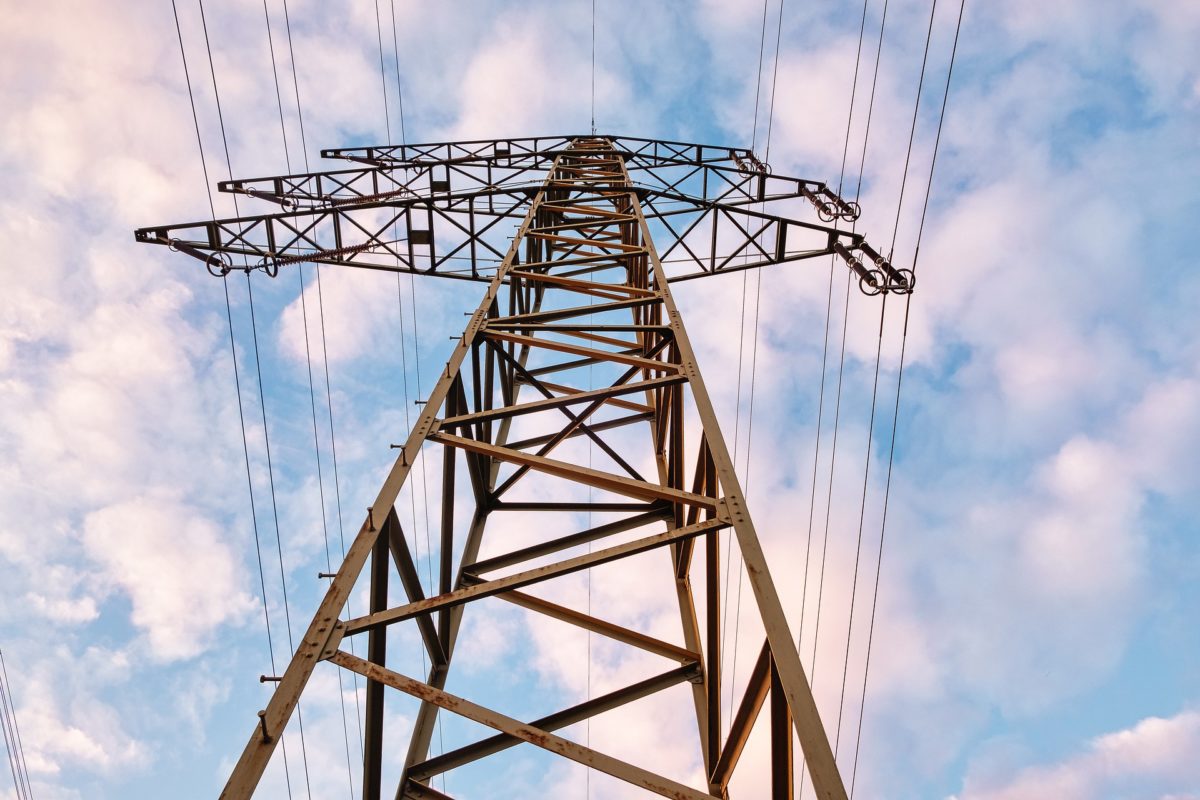Almost 200,000 job-years could be created by the 167 GW of large-scale solar, wind and storage projects awaiting interconnection studies by PJM Interconnection, the nation’s largest grid operator, said the American Council on Renewable Energy (ACORE) in its report Power Up PJM.
A lack of transmission capacity due to “insufficient” transmission planning is a “root cause of the unprecedented backlog” of interconnection requests across grid operators nationwide, the report says.
Virginia, Illinois, Ohio and Indiana have the greatest number of job-years awaiting PJM action, as shown in the nearby bar chart from the report, which also shows the states fully or partly served by PJM. ACORE counted only direct and indirect construction, operation and maintenance jobs, not induced jobs due to increased economic activity in the region.
The 167 GW of pending renewables and storage projects are “eligible for PJM’s transition cycle,” the report says, referring to PJM’s plan, approved by the Federal Energy Regulatory Commission (FERC), to expedite interconnection studies for pending requests through early 2026, while closing its interconnection queue to new requests in the meantime.

ACORE pointed to a sharp decline in renewables projects in the PJM region reaching commercial operation, falling from 20.3% of renewable capacity entering PJM’s queue between 2011 and 2016, to 2.7% of renewable capacity entering PJM’s queue in the fifteen months starting January 1, 2017, citing data from Berkeley Lab.
The recent low success rate for renewables projects in PJM is largely due to “low spending on large-scale, high-voltage transmission” within the PJM region, said Noah Strand, an ACORE policy associate and the report’s author, on an ACORE webinar, citing a study from the nonprofit group RMI.
“It’s good to see PJM going in the right direction” said Brendan Casey, deputy director for economic analysis at the American Clean Power Association, in an apparent reference to PJM’s announced transition to cluster studies, which are more efficient than first-come, first-served studies, speaking on the webinar.
Yet he added that as the industry is currently building about 30 GW of renewables and storage capacity per year, “if we want to have a net-zero grid by 2035, we need to be building more like 90 to 100 gigawatts. And this means speeding up the interconnection processes, not just in PJM but across the country.”
The ACORE report recommended that PJM speed interconnection through transmission planning, accelerating transmission upgrades, additional staffing and automation.
ACORE also recommended that FERC require grid operators to consider grid-enhancing technologies and advanced conductors in the interconnection study process, and set “a more just framework” for allocating transmission upgrade costs associated with interconnection.
This content is protected by copyright and may not be reused. If you want to cooperate with us and would like to reuse some of our content, please contact: editors@pv-magazine.com.








By submitting this form you agree to pv magazine using your data for the purposes of publishing your comment.
Your personal data will only be disclosed or otherwise transmitted to third parties for the purposes of spam filtering or if this is necessary for technical maintenance of the website. Any other transfer to third parties will not take place unless this is justified on the basis of applicable data protection regulations or if pv magazine is legally obliged to do so.
You may revoke this consent at any time with effect for the future, in which case your personal data will be deleted immediately. Otherwise, your data will be deleted if pv magazine has processed your request or the purpose of data storage is fulfilled.
Further information on data privacy can be found in our Data Protection Policy.